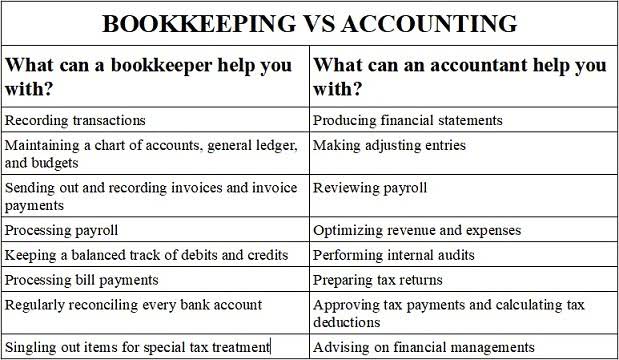Current liabilities include various categories, each with unique implications for cash flow management. Understanding these categories helps stakeholders assess a company’s immediate financial responsibilities. Assets and liabilities are key factors to making smarter decisions with your corporate finances and are often showcased in the balance sheet and other financial statements.
Asset accounts:
For example, the cost of new equipment to be used in a business will include the cost of getting the equipment installed and operating properly. The balance sheet is one in a set of five financial statements distributed by a U.S. corporation. To get a complete understanding of the corporation’s financial position, one must study all five of the financial statements including the notes to normal balance the financial statements. A contingent liability is a potential liability that will only be confirmed as a liability when an uncertain event has been resolved at some point in the future. Only record a contingent liability if it is probable that the liability will occur, and if you can reasonably estimate its amount.
Determining a company’s ability to obtain long-term loans
- Unlike a trial balance that only lists accounts that are active or have balances at the end of the period, the chart lists all of the accounts in the system.
- Your business balance sheet gives you a snapshot of your company’s finances and shows your assets, liabilities, and equity.
- She has more than five years of experience working with non-profit organizations in a finance capacity.
- For example contingent liabilities can become current or long-term if realized.
- Navigating these liabilities requires understanding tax regulations and diligent planning to ensure timely payments, avoiding penalties and interest charges.
- Instead, any sales taxes not yet remitted to the government is a current liability.
Valuation account (also known as contra account) is an account which is used to report the carrying value of an asset or liability in the balance sheet. A popular example of valuation account is the accumulated depreciation account. Companies maintaining fixed assets in the books of accounts at their original cost also maintain an accumulated depreciation account for each fixed asset. In balance sheet, the balance in the accumulated depreciation account is deducted from the original cost of the asset to report it at its book value or carrying value. Another example of valuation account is allowance for doubtful accounts. In balance sheet, the balance in allowance for doubtful accounts is deducted from the total receivables to report them at their net realizable value or carrying value.
Prepaid expenses
- Right after the bank wires you the money, your cash and your liabilities both go up by $10,000.
- It is not classified as a liability since it does not represent a future obligation.
- Typically, they all follow the essential structure described below.
- Liabilities are part of every transaction recorded through double-entry accounting.
- In contrast, GAAP follows a more rules-based approach, with specific guidelines for different types of liabilities.
Accrued expenses are costs that have been incurred but not yet paid, such as wages and utilities. Managing current liabilities effectively is crucial for maintaining liquidity and ensuring that the company can meet its short-term obligations without financial strain. Liability accounts are categorized on the balance sheet under current liabilities, like short-term loans or unearned revenue, and non-current liabilities, like long-term debt or bonds payable. Current liabilities are due within a year, while non-current liabilities are settled over a longer period. This categorization helps in understanding a company’s immediate and future financial health, offering insight into how well a business manages its debt and financial obligations. Current liabilities are a company’s short-term financial obligations; they are typically due within one year.
Why Is a Chart of Accounts Important?
- Current liabilities are crucial for liquidity analysis, while non-current liabilities are significant for understanding a company’s long-term financial stability.
- Asset accounts can be confusing because they not only track what you paid for each asset, but they also follow processes like depreciation.
- Assets have a market value that can increase and decrease but that value does not impact the loan amount.
- In exchange for the preferential treatment of dividends, preferred shareholders usually will not share in the corporation’s increasing earnings and instead receive only their fixed dividend.
- This is true even though they are not directly recorded in the Retained Earnings account at the time they are earned.
But armed with this essential info, you’ll be able to make big purchases what accounts are liabilities confidently, and know exactly where your business stands. It might not seem like much, but without it, we wouldn’t be able to do modern accounting. It tells you when you’ve made a mistake in your accounting, and helps you keep track of all your assets, liabilities and equity. The dividends declared by a company’s board of directors that have yet to be paid out to shareholders get recorded as current liabilities.
What is a Liability Account?
The balance sheet is one of three financial statements that explain your company’s performance. Review your balance sheet each month, and use the analytical tools to assess the financial position of your small business. Using the balance sheet data can help you make better decisions and increase profits. Accounts payable is not classified among expenses, which are found on the income statement. Instead, payables are booked as liabilities and are found on the balance sheet.
Examples of Contra Liability Accounts
In financial accounting, a liability is a https://www.bookstime.com/ quantity of value that a financial entity owes. These types of liabilities usually don’t appear on the balance sheet unless there’s a high chance they’ll happen and the amount can be reasonably estimated. Otherwise, they’re just disclosed in the financial statement notes. These types of liabilities are helpful for understanding how much long-term debt a business has and how it might affect future planning. A company’s net worth, also known as shareholders’ equity or owner’s equity, is calculated by subtracting its total liabilities from its total assets.
In what order are liabilities listed in the chart of accounts?
Another popular calculation that potential investors or lenders might perform while figuring out the health of your business is the debt to capital ratio. Current liabilities are debts that you have to pay back within the next 12 months. Accounting systems have a general ledger where you record your accounts to help balance your books. Keeping your accounts in place and up-to-date is important for analyzing your finances.
Danh mục: Bookkeeping




